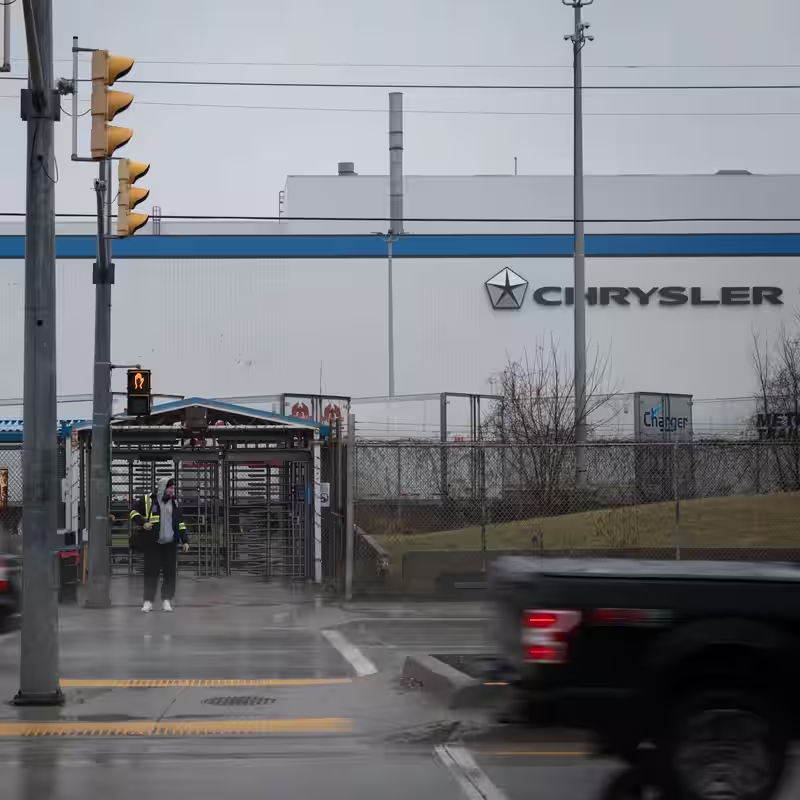Table of Contents
- Stellantis Abandons Ontario Auto Plant
- How Trump’s Tariffs Forced the Move
- Canadian Leaders React with Fury
- Broader Economic Ripple Effects
- What’s Next for Brampton and U.S. Auto Jobs?
- Sources
Stellantis Dumps Canadian Production Amid U.S. Investment Push
In a major blow to Canada’s auto industry, global automaker Stellantis has officially scrapped plans to restart production at its Brampton, Ontario plant—and instead will shift all related manufacturing to Illinois. The move, tied directly to President Donald Trump’s aggressive 25% tariffs on Canadian-made vehicles, marks one of the clearest examples yet of how U.S. trade policy is reshaping North American supply chains.
Stellantis announced a $13 billion, four-year investment plan focused entirely on U.S. operations—its largest-ever commitment to American manufacturing. The Jeep Compass, once slated for assembly in Brampton, will now be built at a retooled plant in Belvidere, Illinois, creating 5,000 new American jobs while leaving roughly 3,000 Canadian autoworkers in limbo.
Trump Tariffs at the Heart of the Decision
Stellantis CEO Antonio Filosa didn’t mince words: the pivot followed “very productive talks with the Trump administration.” Those talks centered on the steep tariffs Trump imposed on Canadian automobiles—a policy he says is designed to “bring manufacturing back to America.”
“We don’t really want cars from Canada,” Trump bluntly told Canadian Prime Minister Mark Carney during a May meeting, according to officials present. With a 25% tariff making Canadian production economically unviable, Stellantis had little choice but to relocate.
Stellantis Plant Shift: Key Facts
| Location | Status | Jobs Impact | Vehicle Model |
|---|---|---|---|
| Brampton, Ontario | Production canceled | ~3,000 jobs at risk | Jeep Compass (planned) |
| Belvidere, Illinois | New production hub | 5,000 new U.S. jobs | Jeep Compass (confirmed) |
Canadian Leaders React with Fury
Canadian officials were quick to assign blame. Prime Minister Mark Carney called the decision “a direct consequence of current U.S. tariffs,” while Ontario Premier Doug Ford accused Stellantis of breaking promises to the Brampton community.
“Stellantis has a duty to live up to their promise to Brampton autoworkers,” Ford said in a statement, noting that his government had not yet released promised funding for the plant’s upgrade—but had expected the company to follow through.
Lana Payne, president of Unifor—the union representing Canadian autoworkers—put it more bluntly: “Canadian auto jobs are being sacrificed on the Trump altar.”
Broader Economic Ripple Effects
The fallout extends beyond one factory. Canada’s auto sector is deeply integrated with the U.S.—parts often cross the border multiple times during assembly. Tariffs disrupt this symbiosis, raising costs for both sides.
In 2022, Canada and Ontario jointly committed $1 billion CAD to help Stellantis modernize its facilities, including Brampton. Now, that investment hangs in the balance. Flavio Volpe, head of the Automotive Parts Manufacturers’ Association, warned that without accountability, other automakers might follow suit.
“We can’t let them off the hook because they got bullied by the White House,” Volpe said.
What’s Next for Brampton and U.S. Auto Jobs?
Stellantis insists it remains committed to Canada long-term—but offered no timeline for reviving Brampton operations. Meanwhile, the U.S. celebrates a manufacturing win: the Belvidere plant, idle since 2023, will reopen with federal and state support.
For Canada, the episode underscores a harsh reality: without a new trade agreement with the Trump administration, its export-dependent economy remains vulnerable to sudden policy shifts in Washington.
As one Ontario official put it: “This isn’t just about cars. It’s about sovereignty.”




